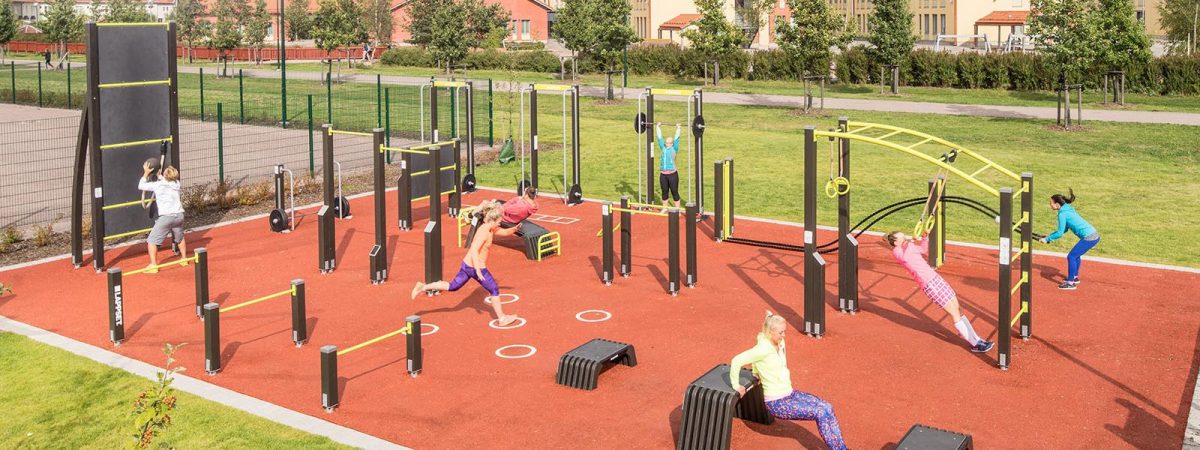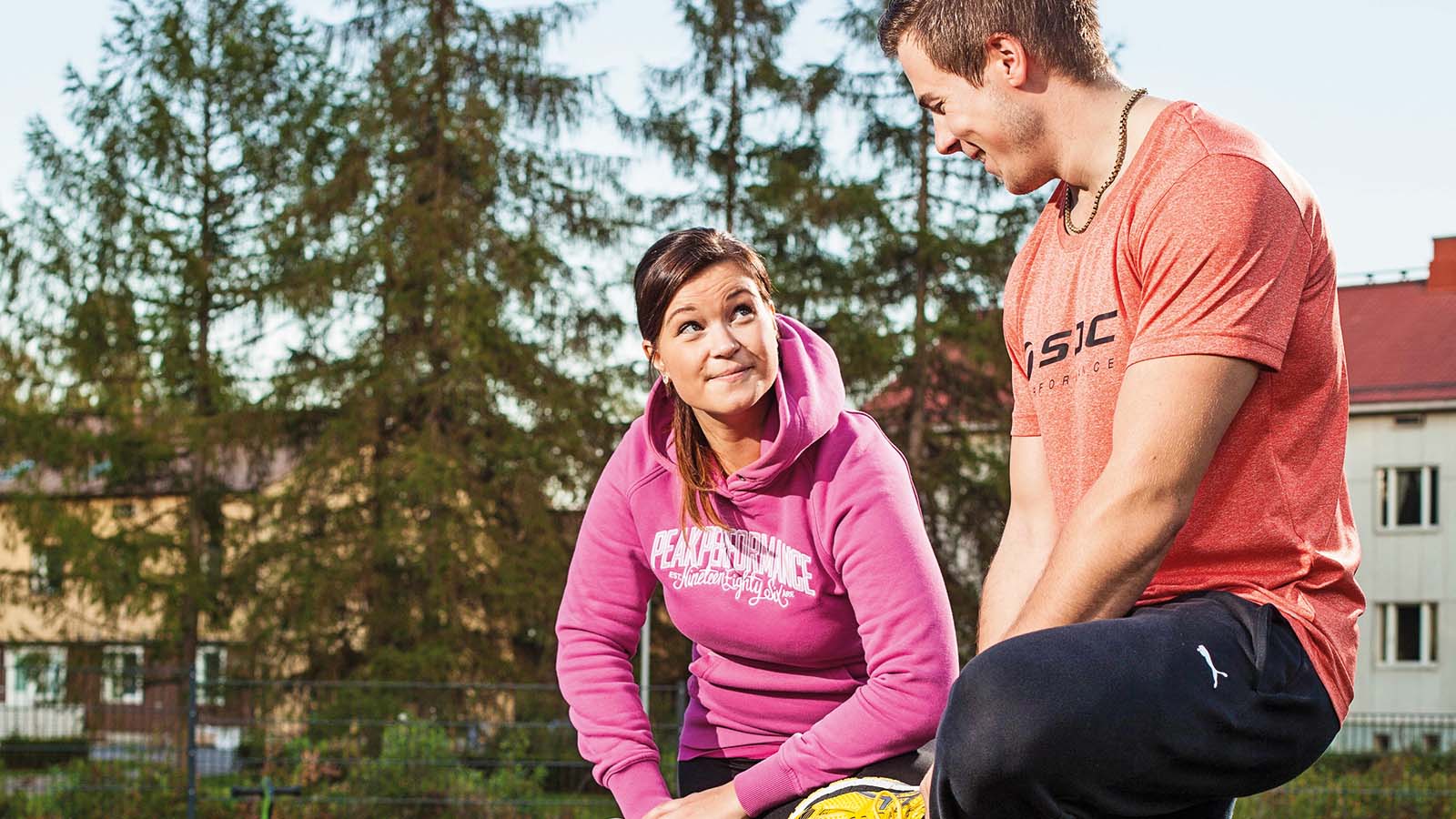WHAT SHOULD YOU TAKE INTO ACCOUNT WHEN DESIGNING A SPORTS AREA?
Playgrounds and fitness sites are increasingly perceived as a single coherent entity. And rightly so, because as children grow older, play develops into other types of physical activity. By the time they reach adulthood, they have hopefully adopted a lifestyle in which physical exercise plays an important part.
While playgrounds and playground equipment have been produced on an industrial scale for fifty years, the track record of designing adjacent fitness areas is not equally long. Great help in this respect is provided by the EN 16630 standard on permanently installed outdoor fitness equipment published about a year ago and the TR 16879 Technical Report ‘Siting of playground and other recreational facilities’.
With the adoption of EN 16630, new requirements have been imposed particularly on equipment comprising moving mechanisms. A couple of years ago, it was common for fitness equipment to be certified according to the EN 1176 standard for playground equipment. This is no longer enough. While safety requirements on playground equipment are usually relatively strict, there are very few regulations regarding moving mechanisms or the risks associated with them.
Child-friendly or not?
If a piece of fitness equipment is child-friendly, it can be installed in the vicinity of a playground and may be used by children for play and exercise. According to the risk-based approach, static equipment is child-friendly and moving equipment is not. However, this is not a universally applicable rule because the movement involved may be gentle and smooth. In such cases the equipment involved may be regarded as child-friendly.
Manufacturers will most likely issue instructions for the siting of their equipment. Even if no such instructions are provided, designers selecting fitness equipment for installation close to a playground would be well-advised to ask themselves: Would I allow my 3-5-year-old children or those of my sister, brother or cousin to play on this equipment? If you have no reservations in doing so, the piece of equipment is most likely child-friendly.
Fitness-only area
According to EN16630, the surface may be hard up to the free fall height of one metre. Additionally, topsoil – in Finland usually in the form of a 10 cm layer of stone dust with a grain size of 0–6 mm – is acceptable up to a free fall height of 120 cm. An intact lawn which is expected to remain so is acceptable up to a height of 150 cm.
Moreover, the permissible free fall height of a chinning bar is the bar height less 100 cm. However, risk assessments suggest that it is advisable to provide a shock absorbing substrate. This area should extend at least one metre in front of and behind the bar’s location.
“If the area involved is not intended for play, fitness equipment can be installed freely and savings can be made on impact absorbing surfaces.”
Starting point for site design: Users
A fitness and recreational area can be designed for a schoolyard. At the lower level, pupils engage mostly in games and play, and hence the level of safety must be close to that of a playground. At the upper level, children grow stronger and physical activities lose their play-like character. Yet in a schoolyard environment, there are always those who use the equipment for play, and therefore it is advisable to provide similar impact absorbing surfaces as in playgrounds.
A fitnesssite located near a playground may be designed for any physical activities as long as it is effectively separated from the playground area. This can be accomplished by distance, landscaping, fencing or signage.
Areas along jogging tracks are prime examples of fitness sites not likely to be used for play. In areas like this, a chinning bar can be installed above topsoil or even a layer of stone dust without any problems.
For recreational areas near senior homes, all equipment should have a free fall of height of less than 120 cm. If so, a 10 cm layer of stone dust with a grain size of 0–6 mm provides sufficient impact absorption capacity.


